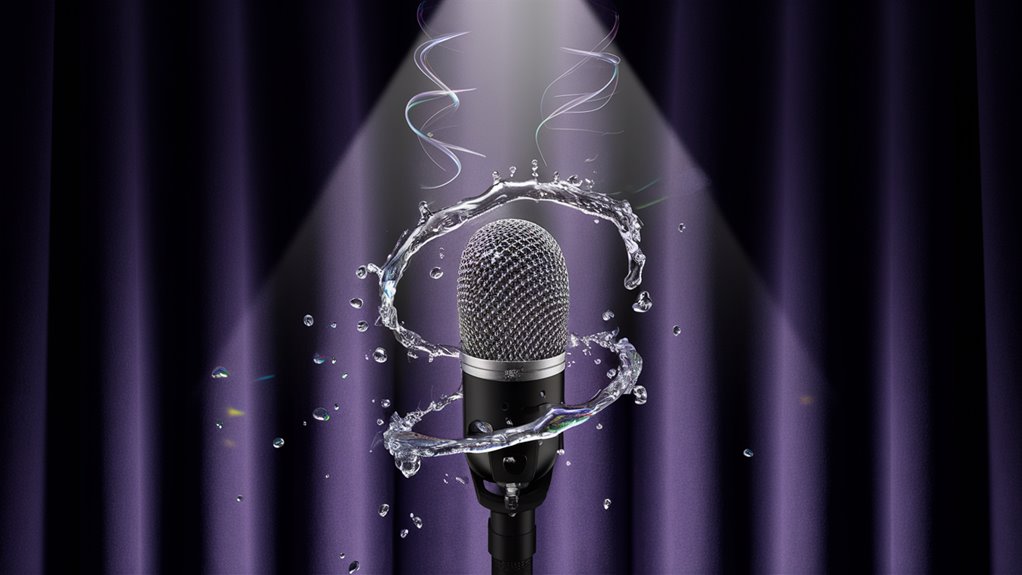Get Set for Your First Karaoke Night

Steps to Take Before You Sing
Choosing 2-3 simple songs you know well that match your voice is key to a fun karaoke show. Pick songs less than 4 minutes to keep folks happy and to save your voice. Learn breathing tips and spot breathe places in words while you rehearse 호치민퍼블릭가라오케
Know the Place and Set up Your Gear
Get there 30 minutes early to learn about the place and gear. Test the sound gear and find the best spot to stand for a good view from the crowd. Stand with legs apart to help your voice reach far.
Singing Well
Keep the mic 4-6 inches from your face for best sound and to avoid noise issues. Stay tall the whole song to aid in breathing and voice reach. Work on mic skills to keep sound even in all parts of the song.
Look After Your Voice
Drink a lot of water hours before you sing. Avoid dairy or beverages that could hurt your voice. Do simple voice warm-ups to get your voice set for high and low notes.
Advice from Experts
- Learn song rhythm and speed
- See how to make the crowd enjoy it
- Move well on stage
- Know key song lyrics and tune parts
- Have other song options ready
- Test how the place echoes and adjust it your way
Choosing the Top Karaoke Song
Match Songs to Your Vocal Range
Begin with songs fitting your voice and singing skill. The best karaoke show comes from singing songs that fit your voice.
Test your vocal range by singing various songs to find your best range.
Know Your Songs Well
Choose songs you’ve heard a lot and know by heart. Knowing all lyrics and tunes well makes you feel confident on stage.
Stick to songs 3-4 minutes long, skip very hard ones or those with long music bits that might bore the crowd system and ensure flawless performances
Think About the Place and Vibe
Understand Your Scene
Fit song mood to the venue. Lively places do better with upbeat, fast songs than slow ones. Always check the venue’s song list and have a backup song just in case.
Points to Consider
Be mindful with song key. If a key is too high or low for you, pick a different version or a new song that suits better, or use a key change tool if available.
Ways to Ensure Success
- How much the crowd gets into it
- If they know the song
- The difficulty of the song
- The acoustics in the venue
- Your timing
Rehearse Your Karaoke Song Seriously
Thoroughly Learn Your Song
Pick where you’ll rehearse and get both the original and karaoke versions.
Create a playlist for easy access in your day, to master melody, rhythm, and timing completely.
How to Rehearse Well
Find a place where you can sing loudly and imagine you’re on stage. Begin by:
- Saying the words to nail them
- Singing with the original artist to match their pitch
- Using the music-only version
- Recording and checking your performance
Prepare For Tough Parts
Focus on challenging sections by spotting:
- Difficult vocal parts
- High notes and key changes
- Fast lyrics
- Optimal places to breathe
Mark tough parts in the lyrics and spend more time on these. Plan a breathing technique by marking the best spots to breathe in the song.
Learn About Your Equipment
Know different karaoke setups as sound and equipment vary with every venue.
Try various mics and sound setups when possible to maintain your singing quality everywhere.
Create a list for the event that includes:
- Sound adjustments
- How to hold the mic
- Speaker placement
- Room acoustics fixes
This detailed plan ensures you are confident and look great in any karaoke setting.
Easy Ways to Breathe Well for Singing

Master Deep Breathing
Deep breathing is crucial for powerful singing and sustaining long notes. This skill aids in holding breath and strong vocal delivery while you sing.
Basic Breathing Exercise
Place one hand on your belly and the other on your chest.
When you breathe in, let your belly expand but keep your chest still. Your lower hand should rise, while your upper hand stays mostly still.
Do this for 5-10 minutes daily until it becomes natural.
The 4-4-4 Breathing Technique
Practice the 4-4-4 breathing method:
- Breathe in for four counts
- Hold for four counts
- Release for four counts
Once this is easy, extend breaths out to eight counts to enhance more breath control.
Know Karaoke Equipment: Essential Guide
Main Elements of Karaoke Equipment
The essentials of karaoke include several key components: mic, amplifier, speaker system, screen, and song selector.
Each element is crucial in creating a great karaoke experience.
What to Learn About Mics
The mic is your chief tool when you sing. Important points include:
- Wireless or wired options
- Power and sound settings
- Correct way to hold it (4-6 inches from face at 45 degrees)
- Test for sound quality
- Preventing unwanted noise
Screen and Selector Technology
What to Observe on Screens
- Real-time lyrics
- Text color changes to guide you
- Bar showing song progress
- Timing cues
How to Choose Songs
- Tablet interfaces
- Remote selections
- Computer song lists
- Key change features
- Tempo change options
Managing Sound Properly
Setting Up Speaker Sound
- Speakers face the performer
- Monitor voice during singing
- Balance sound mix perfectly
- Control music-to-voice volume
- Handle sound feedback
This setup ensures you sound professional when adjusted correctly and managed effectively.
Tips to Tackle Stage Fear for a Successful Show
Understanding Nervousness
Stage fright can disrupt your fun and performance in karaoke events.
Using proven fear-handling strategies ensures you stay confident and perform well on stage.
Essentials Before You Perform
Deep breathing exercises are fundamental to reducing shakes.
Practice the 4-4-4 technique: inhale, hold, and exhale, all for four counts. This keeps your heart rate steady and your mind calm.
How to Position Yourself
Maintain an effective stage position by:
- Ensuring clear views of the lyric screens


